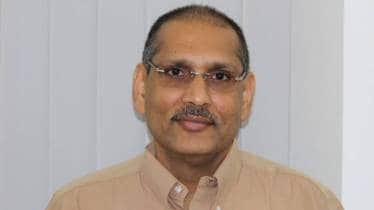We all remember Aamir Khan’s popular character from the movie ‘3 Idiots!’, Phunsukh Wangdoo aka Rancho, who always asserted that one should always chase excellence instead of success. More than the charismatic star power, it was the unique intricacies and virtues of the character that left an impressionable impact on the audience’s minds. The way ‘Rancho’ perceived life and found sustainable solutions for real-life problems was unlike others, and he took it upon himself to spread his knowledge and excellence for the good of all, becoming an educator to empower future generations, especially that at the grassroots.
While enough has been said and written about the reel life ‘Rancho’, today we will share with you the story of a real-life ‘Rancho’ from Odisha, Prof Mukti Kanta Mishra. The educationist not only transformed a failed college in a remote Naxal-infested part of Odisha into a university with six sprawling campuses, but he also made it an epitome of ecological self-sustainability, adhering to the institutional, social, and individual responsibility of being waste minimal and optimally utilizing the various resources, both nature gifted and manmade. His most fascinating brainchild, however, is a skill-based education model with parallel experiential & action learning through on-campus industries in partnership with diverse industry giants.
The ‘Rancho’ factor
The foresighted approach of the educationist is further manifested in how recycling and upcycling are blended into the day-to-day operations of the campus. Since the campuses are mostly residential, a large amount of uncooked and cooked waste is generated. From day one, the campuses have partnerships with local piggeries, which were unable to find food for their livestock, to pick up the waste daily. The remaining food waste is converted to manure through biodigesters.
Centurion Campus in Bhubaneswar was built on absolutely barren land because it is a laterite zone, but food waste was used as an alternative soil to groom and grow grass, various plants, and trees. The entire wastewater of the hostels is treated and used in the fields and mango orchards. Even though there’s a provision to connect with the municipality drainage system, every drop of waste water is used within the campus.
Furthermore, all the waste of the library and other paper waste of the University are consumed within the University by converting it into handmade paper. And even more interestingly, the plastic bottles amassed on the Campus because of the consumption of packaged drinks by students, are shredded and used in making pavers manufactured within the University as part of the Civil Engineering course. These pavers are also sold only to other educational institutions on an I-2-I market basis.
From a failed college to a multi-campus University
The journey started around 2005 when Prof Mishra and his long-time friend Prof DN Rao got the contract to manage a college in a tribal district of Odisha. Due to considerable disagreements in the college management, they were left with two choices, either to quit or to become the trustees themselves, of which they chose the latter and subsequently decided to have a campus in Bhubaneswar and some other parts. The skill-integrated higher education model that Prof Mishra had envisaged because of his education and association with dual-sector universities in Australia was, however, still not possible, as it continued to be a private college affiliated with a government university.
Developing precision components for HAL and ISRO
The University already has more than 32 products within its various campuses produced directly or through its incubated social enterprise or through students’ start-ups. To accomplish the product-centric model, there exist deep-rooted partnerships with various industries for institutional and individual mentoring. The on-campus industries produce market-linked products starting from bread to rice, to CO2 supercritical extracts to transformers, to high precision components for HAL and ISRO. The students are involved and engaged with experts at every level of product design, development, manufacturing, packaging, and marketing. Also, students are made part of the supply chain management and reverse auction. With product and productions alone, the university aims to have a Rs 100 crore turnover by the academic year 2025-26, which is currently around Rs.30-35 crore.
